News
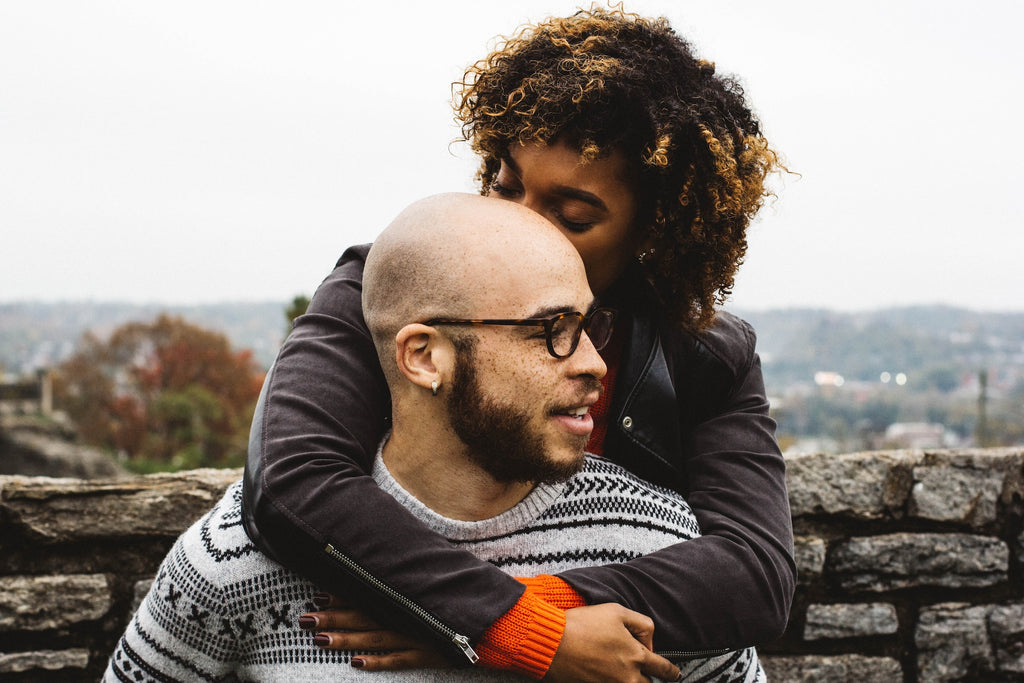
Minoxidil Tablets: A Breakthrough in Baldness Treatment?
Loss of hair or baldness is a concern that is shared by people of all ages, genders, and races across the globe. There are millions who suffer from it, and many of them are searching for effective therapies that will help them regrow their precious strands. Minoxidil is currently one of the therapies for hair loss that is the most sought-after by patients. It is a drug that has been used to treat the condition for decades, and it was just recently granted approval to be taken in tablet form.
That said, in this article, we will explore the use of minoxidil tablets for hair loss treatment.
What Is Minoxidil?
Minoxidil is a medication that was originally developed to treat high blood pressure. However, it was soon discovered that it had an interesting side effect - it could stimulate hair growth. Moving forward, it was subsequently developed as a topical treatment for hair loss, and it has been used for this purpose for over three decades.
How Does Minoxidil Work?
It is not completely clear how exactly minoxidil works to stimulate hair growth, although it has been shown to do so. On the other hand, it is believed that it increases the amount of blood flow to the hair follicles, which in turn encourages the production of new hair. It is also believed that it can enhance the size of hair follicles, which may result in hair that is denser and fuller.
Minoxidil Tablets for Hair Loss Treatment
Oral minoxidil pills function in the same way as the topical form of the medication by boosting the volume of blood that flows to the hair follicles. The tablets should only be used once daily, and there are two different dosages available: 0.25 mg and 1 mg.
Studies have shown that minoxidil tablets can be effective at promoting hair growth in both men and women. In a clinical trial, 62% of men who took minoxidil tablets experienced an increase in hair growth compared to 23% of men who took a placebo. Similarly, in a separate trial, 13.4% of women who took minoxidil tablets experienced an increase in hair growth compared to 5.5% of women who also took a placebo.
The Side Effects of Minoxidil Tablets
Like all medications, minoxidil tablets may cause side effects, such as the appearance of hair in unexpected areas outside the scalp. It also affects the body's ability to regulate blood pressure. Fortunately, this is countered by medications like spironolactone. These adverse reactions are uncommon since minoxidil is often given in a low dose.
It is essential to point out that pregnant women and nursing mothers should not take any tablets containing minoxidil at any time during their pregnancies. Since it can be absorbed through the skin, it poses a risk to an unborn child or a newborn who is being breastfed.
Conclusion
Minoxidil tablets are a breakthrough in hair loss treatment. They offer a convenient and effective way to promote hair growth for both men and women. While they do come with some side effects, these are generally mild and can be managed with proper medical care. If you are struggling with hair loss, minoxidil tablets may be a viable treatment option for you.
However, it is important to speak with a healthcare provider before starting any new medication to ensure that it is safe and appropriate for your consumption.
If you are looking for a trusted source of minoxidil products online, look no further than our amazing selections here at Tugain 10. We offer a wide range of hair products that are sure to bring back the normal growth of your hair. Check out our online store for more of our minoxidil selections and their prices.
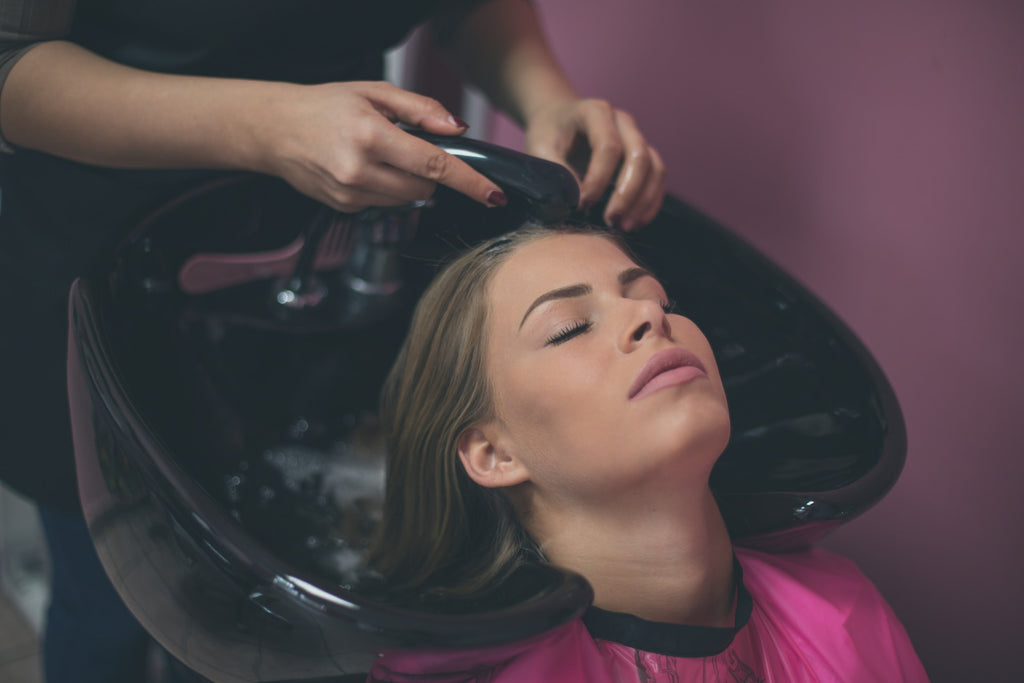
Minoxidil Foam vs. Liquid: Which One is Best for You?
Minoxidil is a medication used to treat hair loss. It is available in two forms: foam and liquid. Both the foam and liquid versions of minoxidil have been shown to be effective in treating hair loss, but which one is best for you depends on your individual needs and preferences. To help you choose, we thought it would be useful to have a brief discussion on minoxidil products. If this is something that you're interested in, read on as we breakdown everything you need to know in order to choose the right minoxidil product for you.
What Is Minoxidil Foam?
Minoxidil foam is a newer form of the medication that has gained popularity in recent years. It is easy to apply and dries quickly, making it a convenient option for those with busy schedules. The foam also tends to be less messy than the liquid version, which can be a major advantage for some people.
One of the biggest benefits of minoxidil foam is that it is less likely to cause scalp irritation than the liquid version. This is because the foam contains less alcohol, which can be drying and irritating to the skin. If you have sensitive skin or are prone to scalp irritation, the foam may be a better choice for you.
Minoxidil foam also tends to be less greasy than the liquid version. This means that it won't leave your hair looking oily or weighed down, which can be a major concern for those with fine or thinning hair. The foam is also easier to style than the liquid version, as it doesn't leave any residue on the hair.
What Is Minoxidil Liquid?
Minoxidil liquid is the original form of the medication and has been used for decades to treat hair loss. It is applied using a dropper and needs to be massaged into the scalp. While it can be messier and more time-consuming to apply than the foam, it is still a popular choice for many people.
One of the biggest advantages of minoxidil liquid is that it tends to be more effective than the foam. This is because the liquid can penetrate the scalp more deeply, allowing it to reach the hair follicles more effectively. If you have severe hair loss or are looking for the most effective option, the liquid may be a better choice for you.
Another advantage of minoxidil liquid is that it is available in a higher concentration than the foam. If you are looking for the highest concentration of minoxidil available, the liquid may be a better choice for you.
Minoxidil liquid can also be more cost-effective than the foam. While the initial cost of the liquid may be higher, it tends to last longer than the foam. This is because the liquid is applied directly to the scalp, while the foam tends to be more spread out over the hair. If you are looking for a more cost-effective option, the liquid may be a better choice for you.
Which One Is Best for You?
Ultimately, the best choice for you will depend on your individual needs and preferences. If you have sensitive skin or are prone to scalp irritation, the foam may be a better choice for you. If you are looking for a more affordable option or are experiencing severe hair loss, the liquid may be a better choice.
It is important to note that both forms of minoxidil can take several months to show results. If you are not seeing results after 4 months, talk to your doctor about other treatment options.
At Tugain 10, we offer various strengths of minoxidil products, including Tugain 10, which contains 10% minoxidil for those with more advanced hair loss. Our products are quality-tested and safe to use, and we provide clear instructions on how to use them. Shop online or contact us to learn how minoxidil can help with hair loss.

7 Facts You Need to Know about Minoxidil for Hair Growth
Are you tired of dealing with hair loss? Minoxidil may be the solution for you. Minoxidil is a medication that is used to treat hair loss in men and women. It works by increasing blood flow to the hair follicles, which can help to promote hair growth.
If you're considering using minoxidil, here are several questions you might have about the medication and what it can do for your hair:
1. What Is Minoxidil?
Minoxidil is an over-the-counter medication that is used to treat hair loss. It is applied topically to the scalp and works by increasing blood flow to the hair follicles. Minoxidil comes in two forms: a 2% solution and a 5% solution. The 5% solution is more effective than the 2% solution but may also cause more side effects.
2. How Does Minoxidil Work?
Minoxidil works by increasing blood flow to the hair follicles. This increased blood flow can help stimulate the hair follicles, leading to hair growth. It is not entirely clear how minoxidil works, but it is believed to widen the scalp's blood vessels, allowing more oxygen, blood, and nutrients to reach the hair follicles.
3. Who Can Use Minoxidil?
Minoxidil can be used by both men and women experiencing hair loss. It is most effective for those who have hereditary hair loss or androgenetic alopecia. However, take note that minoxidil may not be effective for everyone, and it may take several months to see results. Talk to a doctor before using minoxidil to determine if it is the right treatment option.
4. How Do You Use Minoxidil?
Minoxidil is applied topically to the scalp. The recommended dosage for the 5% solution is 1 ml twice a day. The 2% solution is applied once a day. Use it on a clean, dry scalp, and avoid washing your hair for at least four hours after application. Apply the solution to the areas of hair loss and gently massage it into the scalp.
5. How Long Does It Take To See Results with Minoxidil?
It can take up to four months to see any noticeable results from minoxidil use. Some people may start seeing results earlier, while others may take longer. If you stop using minoxidil, any hair that has grown due to the medication will fall out within a few months.
6. What Are the Side Effects of Minoxidil?
The most common side effects of minoxidil include scalp irritation, dryness, and itching. Other possible side effects include dizziness, lightheadedness, chest pain, rapid heartbeat, swelling of the hands or feet, and unwanted facial or body hair growth.
Is Minoxidil Safe?
Minoxidil is considered safe for most people to use. Be sure to follow the instructions your healthcare provider or manufacturer provides carefully to avoid any potential side effects. Also, bear in mind that minoxidil should not be used by pregnant or breastfeeding women unless specifically instructed by a healthcare provider.
Key Takeaway
It's no secret that minoxidil can be an effective treatment for hair loss. It works by increasing blood flow to the hair follicles, which can help to stimulate hair growth. If you're considering using minoxidil, understand how the medication works, how to use it, and what potential side effects to watch out for. Talk to your doctor if you have concerns about using minoxidil.
At Tugain 10, we offer various strengths of minoxidil products, including Tugain 10, which contains 10% minoxidil for those with more advanced hair loss. Our products are quality-tested and safe to use, and we provide clear instructions on how to use them.
Shop online or contact us to learn how minoxidil can help with hair loss.
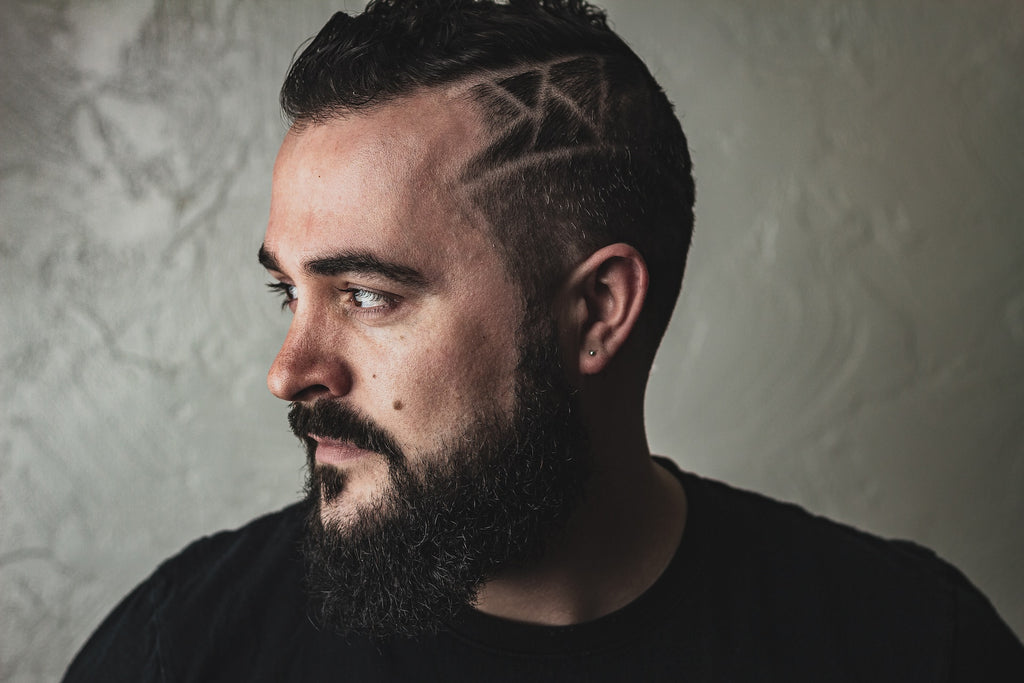
Keep Your Hair with Minoxidil: Long-Term Use Explained
Minoxidil, or Rogaine or Regaine, is a medication used to treat hair loss. It is a topical solution applied directly to the scalp to stimulate hair growth. While it is an effective treatment for hair loss, many people wonder if they need to use it forever.
What Is Minoxidil?
Minoxidil was originally developed as a medication to treat high blood pressure. However, researchers noticed that it also had the side effect of stimulating hair growth. In the 1980s, it was approved by the FDA as a hair loss treatment.
Minoxidil dilates the blood vessels in the scalp, increasing blood flow to the hair follicles. This, in turn, stimulates hair growth and prolongs the growth phase of the hair cycle. It is effective for both men and women and is available in 2% and 5% concentrations.
Benefits of Long-Term Use
One of the main benefits of using minoxidil long-term is that it can help maintain the results of hair restoration treatments, such as hair transplant surgery. After a hair transplant, the transplanted hairs are permanent. However, the existing hairs are still subject to the same genetic factors that caused the hair loss in the first place. By using minoxidil, patients can help maintain their existing hair and prevent further hair loss.
Another benefit of long-term use is that it can help prevent hair loss from getting worse. While minoxidil does not cure hair loss, it can slow down the hair loss rate and prevent balding from progressing.
Drawbacks of Long-Term Use
One of the main drawbacks of using minoxidil long-term is that it can be expensive. Minoxidil is not a one-time treatment; patients must use it regularly to see results. If patients stop using minoxidil, their hair loss may return, so they need to continue using it indefinitely. This can be costly, especially if patients use the 5% concentration, which is more expensive than the 2% concentration.
Another drawback is that it can be time-consuming to use. Minoxidil must be applied to the scalp twice daily, which can be a hassle for some people. Patients who are inconsistent with their use may not see the desired results.
Finally, some people may experience side effects from using minoxidil, such as scalp irritation or itching. While these side effects are usually mild and go away independently, they can be bothersome for some people.
Alternatives to Long-Term Use
While minoxidil is a popular and effective treatment for hair loss, other options are available for people who do not want to use it long-term. One alternative is hair transplant surgery, a permanent solution for hair loss. Another option is low-level laser therapy (LLLT), which uses red light therapy to stimulate hair growth. LLLT is a non-invasive treatment that does not require daily use.
Conclusion
Minoxidil is a popular and effective treatment for hair loss. While it is not a cure for hair loss, it can help slow down the rate of hair loss and stimulate hair growth. However, minoxidil does need to be used long-term to see results, which can be expensive and time-consuming. Patients who do not want to use minoxidil long-term can explore other options, such as hair transplant surgery or LLLT. Ultimately, the decision to use minoxidil long-term should be made in consultation with a dermatologist or hair restoration specialist.
If you're looking for an effective solution to stimulate hair growth and prevent further hair loss, consider using Tugain's 12.5% Minoxidil, Tugain 10% Liquid, or Tugain Foam 10% products. These minoxidil-based treatments are clinically proven to work. Contact us today!
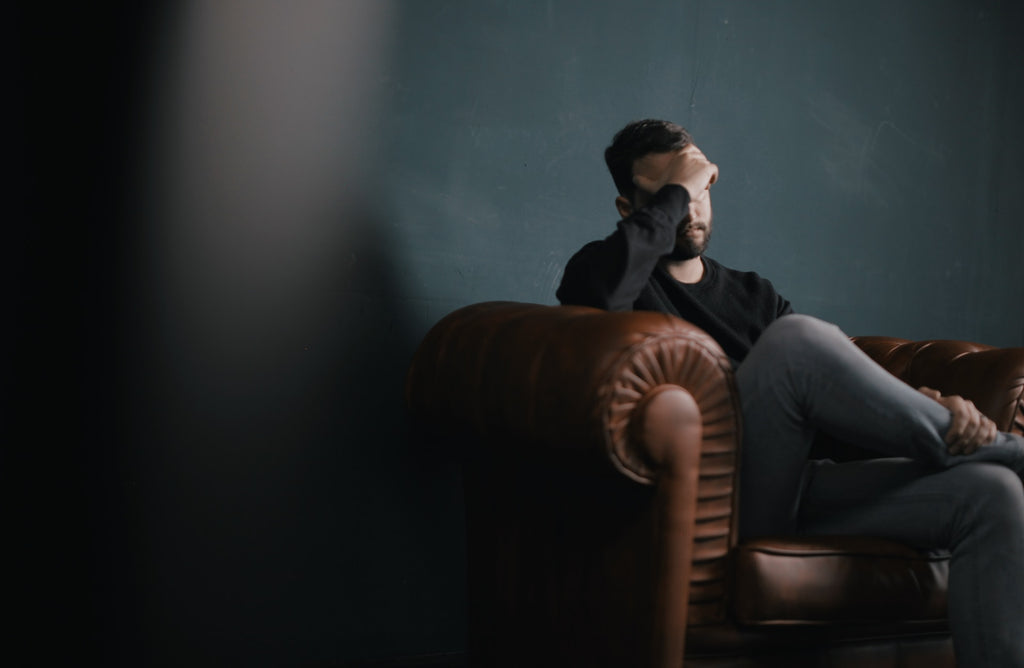
Hair Loss and Mental Health: Are They Interconnected?
Hair loss can be quite a distressing experience for both men and women. It can lead to a decrease in self-confidence, self-esteem and a negative impact on mental health. The emotional impact of hair loss is often overlooked, but research has shown that hair loss and mental health are interconnected. In this blog, we will explore the connection between hair loss and mental health and provide some tips to help manage the emotional impact of hair loss.
Hair Loss and Mental Health
Hair loss can occur for various reasons, including genetics, hormonal changes, medical conditions, medications, and stress. The emotional impact of hair loss can be significant and can lead to anxiety, depression, and even suicidal ideation in some individuals. Hair loss can affect a person's self-image, self-esteem, and self-confidence, which can lead to social isolation, avoidance of social situations, and decreased quality of life.
Research conducted by the National Institutes of Health (NIH) has shown that hair loss can have a negative impact on mental health. In a study of 157 men and women with androgenetic alopecia (male or female pattern baldness), researchers found that participants experienced a decrease in self-esteem, an increase in anxiety, and a decrease in quality of life. The study also found that participants who had a higher level of hair loss had a more negative impact on mental health.
Another study conducted by the American Academy of Dermatology found that hair loss can lead to depression, anxiety, and social phobia. The study surveyed 736 men and women with hair loss and found that 63% of participants reported feeling depressed, 53% reported feeling anxious, and 22% reported feeling socially phobic. The study also found that the emotional impact of hair loss was greater in women than in men.
Tips to Manage the Emotional Impact of Hair Loss
If you are experiencing hair loss, it is important to seek support from family, friends, and healthcare professionals. Here are some tips to help manage the emotional impact of hair loss:
- Talk to a Healthcare Professional: If you are experiencing hair loss, talk to a dermatologist or a healthcare professional who specializes in hair loss. They can help diagnose the cause of your hair loss and provide treatment options.
- Seek Support: Talk to family and friends about your hair loss. They can provide emotional support and help you cope with the emotional impact of hair loss.
- Join a Support Group: When under stress or experiencing mental health symptoms, joining a support group can provide a sense of community and support. You can connect with others who are experiencing similar hair loss and share your experiences.
- Practice Self-Care: Engage in activities that promote self-care, such as exercise, meditation, or yoga. Taking care of your physical and emotional health can help you cope with the emotional impact of hair loss.
- Consider Therapy: If you are experiencing depression or anxiety due to hair loss, consider talking to a therapist. They can provide support and help you develop coping strategies to manage the emotional impact of hair loss.
Conclusion
Hair loss and mental health are interconnected, and the emotional impact of hair loss should not be overlooked. Hair loss can lead to decreased self-esteem, self-confidence and a negative impact on mental health. If you are experiencing hair loss, it is important to seek support from family, friends, and healthcare professionals. By talking to a dermatologist or a healthcare professional who specializes in hair loss, seeking support from family and friends, joining a support group, practicing self-care, and considering therapy, you can manage the emotional impact of hair loss and improve your quality of life.
Looking for a solution to combat hair loss and promote thicker, fuller hair? Look no further than Tugain 10. Our 12.5% Minoxidil solution has been proven to help against hair loss, and our range of products is sure to fit any lifestyle and budget. Say goodbye to thinning hair and hello to a new, confident you with Tugain 10. Shop our selection of 12.5% minoxidil products today and take the first step towards achieving the hair you've always wanted.
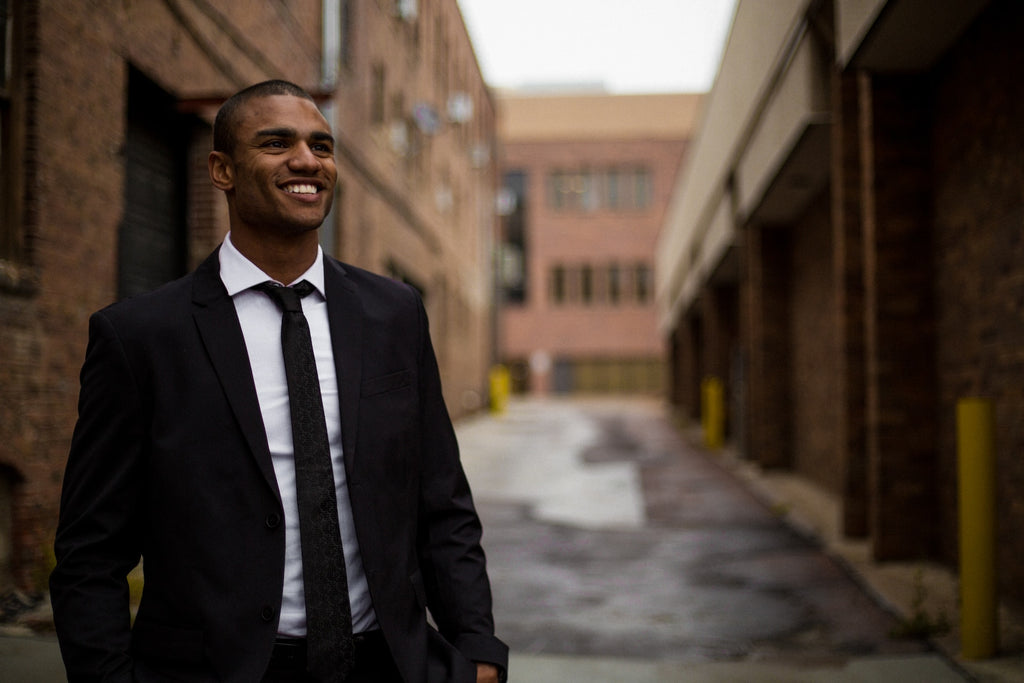
Uncovering the Truth about Minoxidil for Hair Loss
When it comes to hair loss treatments, plenty of options are available. From shampoos and supplements to medications and surgeries, the market is flooded with options claiming to restore hair growth. One such treatment that has gained popularity over the years is Minoxidil. But what exactly is Minoxidil, and does it work?
What Is Minoxidil?
Minoxidil is a medication that was initially used to treat high blood pressure. However, it was discovered that one of its side effects was hair growth. Since then, it has been repurposed and is now available as a topical solution for treating hair loss. Minoxidil works by widening the blood vessels in the scalp, increasing blood flow to the hair follicles, and promoting hair growth.
Minoxidil for Men and Women
Minoxidil is available in different strengths, including 2% and 5%. The 2% solution is recommended for women, while the 5% is recommended for men. This is because the 5% solution is stronger and may cause unwanted side effects in women. For best results, Minoxidil should be applied twice daily to the scalp.
Minoxidil Results
The effectiveness of Minoxidil varies from person to person. In some cases, it can lead to significant hair growth; in others, it may not have any effect. It is important to note that Minoxidil is not a miracle cure for hair loss and may take several months to see results. Additionally, once a person stops using Minoxidil, any hair growth achieved will likely be lost.
Minoxidil Side Effects
Like all medications, Minoxidil does have some potential side effects. These can include scalp irritation, itching, and dryness. In some cases, Minoxidil can also cause unwanted hair growth in other areas of the body. Speaking to a healthcare professional before using Minoxidil is important to ensure it is safe.
Minoxidil vs. Other Hair Loss Treatments
Minoxidil is just one of many hair loss treatments available. Other options include Propecia, hair transplant surgery, and natural remedies like essential oils and supplements. Minoxidil is often combined with other hair loss treatments for maximum results.
Propecia, also known as Finasteride, is an oral medication that reduces the levels of DHT (dihydrotestosterone) in the scalp. DHT is a hormone that can shrink hair follicles, leading to hair loss. Propecia is only recommended for men and should not be used by women or children.
Hair transplant surgery involves removing hair follicles from one area of the scalp and transplanting them to another. This is a more invasive option and requires a skilled surgeon to perform the procedure. While hair transplant surgery can be effective, it is also more expensive and carries a higher risk of complications.
Natural remedies like essential oils and supplements have gained popularity recently as a natural alternative to traditional hair loss treatments. While there is limited scientific evidence to support the effectiveness of these remedies, some people have reported positive results.
The Bottom Line
So, is Minoxidil fact or fiction? The answer is somewhere in between. While Minoxidil does have some proven benefits for promoting hair growth, it is not a magic cure for hair loss. It may take several months to see results, and any hair growth achieved may be lost once the medication is discontinued. Speaking with a healthcare professional before starting any new medicine or treatment is important.
If you're looking for an effective hair loss treatment, consider using Tugain 10 products containing high-concentration minoxidil. It's versatile and suitable for different hair types with both liquid and foam form options. Shop with us today!
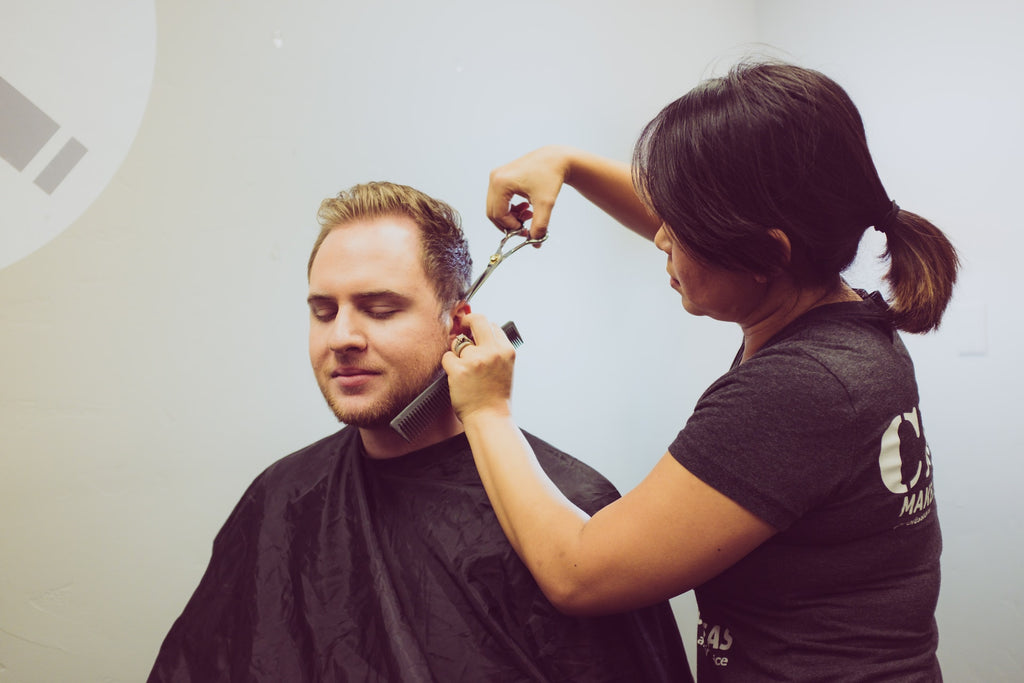
Minoxidil Hair Styling Hacks for Men
Hair loss affects millions of men worldwide. It can be frustrating and embarrassing, often causing a loss of confidence and self-esteem. Fortunately, a few treatments available can help reverse hair loss. One of the most famous and potent approaches is Minoxidil.
Minoxidil, also known as Rogaine, is an over-the-counter medication used to treat hair loss in men. However, it is also known for its hair-styling benefits.
How Minoxidil Works
Minoxidil works in two ways. Firstly, it widens blood vessels in the scalp, increasing blood flow and nutrient delivery to hair follicles. This improved blood flow can stimulate follicles that are in a dormant phase, promoting hair growth. Secondly, it can also prolong the hair cycle's anagen (growth) phase, allowing hair to grow for longer periods.
Minoxidil Hair Styling Hacks
1. Fuller Looking Hair
Minoxidil is a helpful product that can make your hair appear fuller. To use it, rub a small amount of Minoxidil foam onto your hands. Apply the foam evenly to your hair, especially when you want to add volume. Afterward, style your hair using a comb or your fingers.
2. Tame Flyaways
Flyaways can be a pain, but using a Minoxidil-infused product can help tame them. Simply apply a small amount of Minoxidil foam to your hands and run your fingers through your hair, targeting the areas where flyaways tend to occur.
3. Hold Your Hairstyle
Minoxidil can act as a natural hair gel through its ability to hold your hairstyle in place. Apply minimal Minoxidil foam to your hands and run your fingers through your hair, styling as desired. Minoxidil will help keep your hair in place while promoting hair growth.
4. Thicken Your Beard
If you're unhappy with your uneven beard, you can use a Minoxidil product to make it denser. Put a small amount of Minoxidil on your beard and rub it softly. This will encourage hair growth in that region, ultimately making your beard look thicker and more voluminous as time goes by.
5. Add Shine
Using Minoxidil foam can make your hair shiny. Take a little bit of the foam and rub it between your hands. Then, apply it to your hair, especially the tips, to enhance its shine and brightness.
6. Create Texture
Minoxidil can help create texture in your hair. Apply a small amount of Minoxidil foam to your fingertips and rub them together. Then, apply the foam to your hair, focusing on areas where you want to add texture.
7. Enhance Your Natural Curls
Men with curly hair can use Minoxidil to enhance their natural curls. Apply a small amount of Minoxidil foam to your fingertips and rub them together. Once done, use your fingers to scrunch your hair and define your curls. Allow your hair to air dry, or use a diffuser to dry your hair while maintaining your curls.
Final Thoughts
Minoxidil is not just a hair loss medication but can also help with styling. These Minoxidil hair styling hacks can help you achieve the desired look while promoting hair growth. Remember to use Minoxidil as directed and consult your healthcare provider before starting any new hair care regimen.
Improve your hair growth with Tugain 10. Our minoxidil formula is clinically proven to stimulate hair follicles and promote healthy hair growth. Don't wait any longer to transform your hair. Try Tugain 10 now!
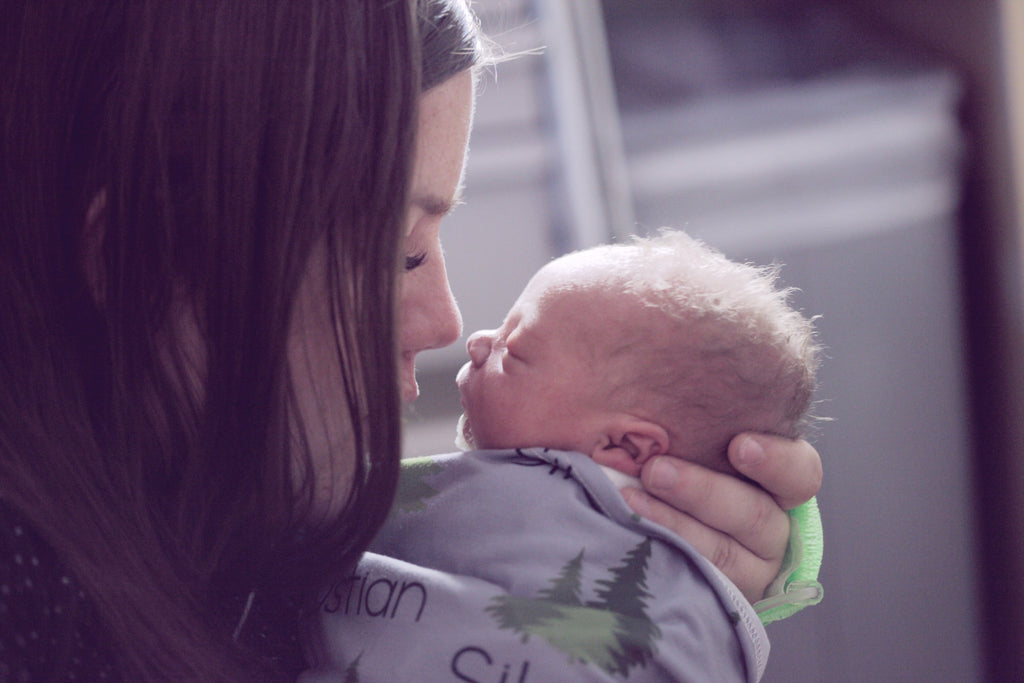
Postpartum Hair Loss: Can Minoxidil Solve Hair Loss?
Postpartum hair loss can be a distressing condition for new mothers. It is a common phenomenon that affects around 50% to 90% of women after childbirth. The condition is characterized by excessive hair shedding, which can cause thinning hair, bald spots, and a general reduction in hair volume. While postpartum hair loss is natural and temporary, it can be an emotional and physical burden for many women.
What Is Minoxidil?
Minoxidil is a medication that was originally developed to treat high blood pressure. However, it was later discovered that it had an unexpected side effect – it could stimulate hair growth. Minoxidil is now widely used for hair loss treatment, including male-pattern baldness and female-pattern hair loss.
How Does Minoxidil Work?
The exact mechanism by which minoxidil promotes hair growth is not fully understood. However, it is believed to work by widening blood vessels in the scalp, which increases blood flow to the hair follicles. This increased blood flow delivers more oxygen and nutrients to the follicles, stimulating hair growth.
Does Minoxidil Work for Postpartum Hair Loss?
There is limited research on using minoxidil for postpartum hair loss specifically. However, some evidence suggests that it may be effective in this context.
One study published in the Journal of the American Academy of Dermatology found that women who used minoxidil 5% solution for 24 weeks experienced significantly more hair regrowth than those who used a placebo. However, it is important to note that this study did not specifically focus on postpartum hair loss.
Another study published in the Journal of Drugs in Dermatology found that minoxidil 5% foam effectively treats female pattern hair loss, which can occur after childbirth. This study did not focus specifically on postpartum hair loss either, but it does suggest that minoxidil may be effective in treating hair loss in women.
Side Effects of Minoxidil
Like all medications, minoxidil can cause side effects. The most common side effect is scalp irritation, including redness, itching, and flaking. Some people may also experience unwanted hair growth in areas other than the scalp, such as the face or hands.
In rare cases, minoxidil can cause more severe side effects, such as chest pain, rapid heartbeat, or difficulty breathing. If you experience these symptoms while using minoxidil, you should immediately seek medical attention.
Other Treatments for Postpartum Hair Loss
1. Nutritional Supplements
Hair loss can signify nutritional deficiencies, so supplements such as biotin, iron, and vitamin D may help support hair growth.2. Hair Transplantation
Hair transplantation may be an option for women with more severe hair loss. This involves taking hair follicles from one area of the scalp and transplanting them into areas of thinning hair.3. Hair Extensions
Hair extensions can be a temporary solution for women who want to add volume and length to their hair while waiting for their natural hair to grow back.Conclusion
While there is limited research on using minoxidil specifically for postpartum hair loss, some evidence suggests it may be effective. However, like all medications, minoxidil can cause side effects and is unsuitable for everyone. If you are considering using minoxidil for postpartum hair loss, it is important to speak with your doctor to determine if it is a good option.
If you're experiencing postpartum hair loss, don't let it bring you down. You have options, including minoxidil-based products like 12.5% Minoxidil, Tugain 10% Liquid, or Tugain Foam 10%. However, you must consult your doctor before starting any new treatment regimen. Contact us today!
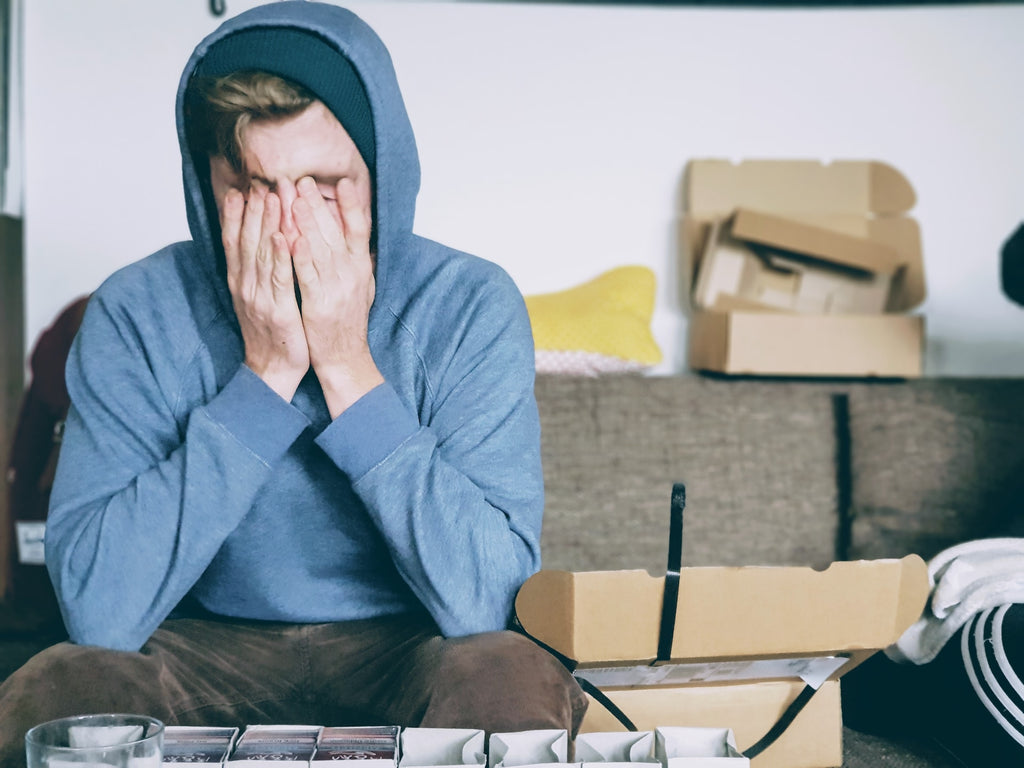
Exploring the Factors Causing Your Hair Loss
Hair loss is a common problem that affects millions of people worldwide. While genetics is the most well-known factor contributing to hair loss, many other factors can also cause hair loss.
In this article, we will explore some factors that can cause hair loss besides genetics.
Stress
Stress is one of the leading causes of hair loss in both men and women. When you are under pressure, your body releases a hormone called cortisol. High levels of cortisol can damage hair follicles, leading to hair loss.
Stress can also disrupt the natural hair growth cycle, causing hair to fall out prematurely. Managing stress through relaxation techniques such as yoga, meditation, or deep breathing is vital.
Hormonal Imbalance
Hormonal imbalances can also cause hair loss.
For example, an excess of androgens, which are male hormones, can cause hair loss in women. This condition is known as androgenetic alopecia or female pattern hair loss.
Hormonal imbalances can also occur during pregnancy or menopause, leading to temporary hair loss.
It is essential to consult a medical professional who can recommend hormone therapy or other treatments to treat hormonal imbalances.
Nutritional Deficiencies
Nutritional deficiencies can also contribute to hair loss. For example, lacking iron, vitamin D, or biotin can cause hair to thin or fall out.
Iron is essential for healthy hair growth, while vitamin D helps regulate the growth cycle. Biotin, also known as vitamin H, is vital for producing keratin, a protein that makes up hair.
Eating a balanced diet that includes plenty of fruits, vegetables, whole grains, and lean protein sources is essential to prevent nutritional deficiencies.
Hairstyling Practices
Certain hairstyling practices can also cause hair loss. For example, tight hairstyles like braids, ponytails, or cornrows can cause traction alopecia. This condition occurs when the hair is pulled too tightly, causing damage to the hair follicles.
Moreover, chemical treatments such as perms or relaxers can weaken the hair, causing it to break or fall out. Avoiding tight hairstyles and chemical treatments or limiting their use is essential to prevent hair loss from hairstyling practices.
Scalp Conditions
Certain scalp conditions can also cause hair loss. For example, scalp psoriasis, seborrheic dermatitis, or fungal infections can cause hair to fall out. These conditions can cause inflammation or damage the hair follicles, leading to hair loss. Consult a dermatologist who can recommend topical or oral medications to treat the condition.
Conclusion
Hair loss is a common problem caused by various factors besides genetics. Maintaining a healthy lifestyle with a balanced diet, regular exercise, and stress management techniques is essential.
Finally, if you are experiencing hair loss, it is essential to consult a medical professional who can recommend the best treatment options for your specific condition. You can prevent hair loss and maintain healthy, beautiful hair with the right treatment and care.
If you're looking for an effective solution to combat hair loss, try Tugain 10, available in liquid and foam formulations. With 12.5% minoxidil, Tugain 10 is a highly effective treatment option to help you regrow your hair and prevent further hair loss. For those who prefer Mintop hair solution, Tugain 10% liquid is a great alternative that offers similar results. Don't wait - order Tugain 10 today and take the first step towards healthier, fuller hair.
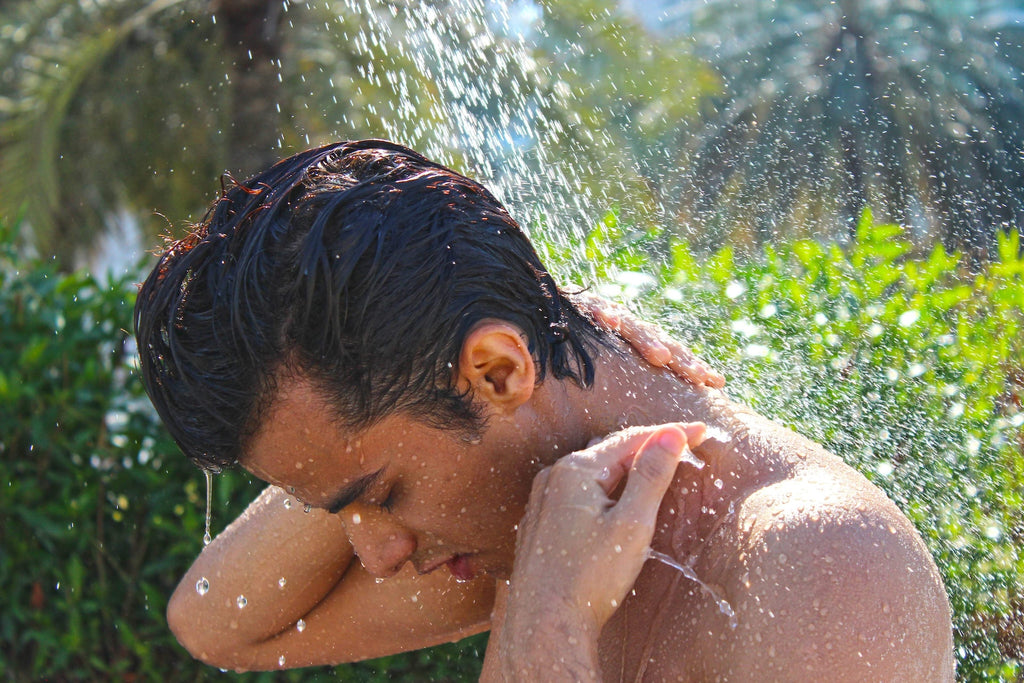
Wet vs. Dry Hair: The Best Way to Maximise Minoxidil
If you've been struggling with hair loss or hair thinning, you've likely come across the term 'minoxidil.' This FDA-approved medication is a popular over-the-counter solution for people experiencing various forms of hair loss. But, as with any treatment, it's essential to understand what it is and how to use it properly for optimal results.
In this blog section, we will discuss what minoxidil is, its benefits, and the crucial question: should you apply it to wet or dry hair?
What Is Minoxidil?
Minoxidil is a topical medication initially developed to treat high blood pressure. However, researchers soon discovered its potential as a hair growth stimulant. Now, it is widely available as an over-the-counter treatment for male and female pattern baldness, typically in the form of liquid or foam solutions with 2% or 5% concentrations.
Minoxidil works by prolonging the anagen (growth) phase of the hair growth cycle, which results in longer and thicker hair strands. It also increases blood flow to the hair follicles, providing them with essential nutrients and oxygen that promote healthy hair growth.
Benefits of Minoxidil
Minoxidil has proven to be effective in treating hair loss in both men and women. Some of the key benefits of using this medication include:
1. Slows Down Hair Loss
Minoxidil can effectively slow down the rate of hair loss in individuals with androgenetic alopecia (male or female pattern baldness).
2. Promotes Hair Growth
Several studies have shown that minoxidil can stimulate new hair growth, even in people with severe hair loss.
3. Easy to Use
Minoxidil's over-the-counter availability and simple application process make it an attractive option for those looking to combat hair loss.
4. Minimal Side Effects
When used as directed, minoxidil has minimal side effects, with the most common being mild scalp irritation.
Applying Minoxidil: Wet or Dry Hair?
Now that we understand what minoxidil is and its benefits let's address the crucial question: should you apply minoxidil to wet or dry hair? The answer: dry hair.
Minoxidil is most effective when applied to a clean and dry scalp, as its absorption into the skin is crucial for its effectiveness. Applying minoxidil to wet hair can dilute the medication, reducing its potency and making it less likely to be absorbed into the scalp. Furthermore, applying minoxidil to damp hair can lead to uneven distribution across the scalp, potentially causing an imbalance in its effects.
Here's a step-by-step guide on applying minoxidil to dry hair:
1. Wash and Dry Your Hair
Before applying minoxidil, it's essential to ensure your hair and scalp are clean and free of any residue. This will allow the medication to be absorbed more effectively. Use a gentle shampoo and conditioner, then thoroughly dry your hair with a towel or hair dryer.
2. Measure the Correct Dosage
Depending on the specific product and concentration, the recommended dosage may vary. For most liquid solutions, the recommended dose is 1 ml, while foam solutions may require a half capful. Be sure to follow the instructions on the packaging.
3. Apply the Solution
Part your hair in the area where you're experiencing hair loss, and gently apply the minoxidil solution directly to your scalp. Use your fingertips to spread the solution evenly across the area, ensuring maximum contact with your skin.
4. Massage It In
Gently massage the minoxidil solution into your scalp for a few minutes to help increase blood flow and promote absorption.
5. Let It Dry
Allow the solution to dry naturally on your scalp for at least four hours before washing your hair, going to bed, or applying any other styling products.
6. Wash Your Hands
Minoxidil can cause hair growth in unintended areas if not washed off properly. Ensure you wash your hands thoroughly with soap and water after applying the solution.
Conclusion
All in all, minoxidil can be an effective solution for individuals struggling with hair loss or hair thinning. To optimize its benefits, it's essential to apply the medication to clean, dry hair and follow the recommended dosage and application instructions. With consistent use and proper application, you can expect to see results within three to six months. However, be sure to consult with a professional before starting any new treatment to ensure it's appropriate for your specific needs and to discuss any potential side effects or interactions with other medications.
Tugain 10 offers various minoxidil products to help individuals enjoy the hair growth they need to look great and feel even better! If you are looking for minoxidil products in London, check out what we offer!

Morr 12.5% Solution: Everything You Need to Know
Hair loss is a common yet distressing condition affecting millions worldwide. While there are several causes of hair loss, the most common reason is androgenetic alopecia, also known as male or female pattern baldness.
Fortunately, people with hair loss have several options to treat their condition, including topical solutions like Morr 12.5%. This article will cover everything you must know about Morr 12.5% solution.
Morr 12.5% solution is a topical medication used to alleviate hair loss in both men and women. The solution contains two active ingredients, 12.5% Minoxidil and Finasteride. Minoxidil is a vasodilator, which widens the blood vessels in the scalp, letting more oxygen and nutrients reach the hair follicles.
Conversely, Finasteride is a 5-alpha-reductase inhibitor that blocks the conversion of testosterone to dihydrotestosterone (DHT). DHT is a hormone that shrinks hair follicles, leading to hair loss.
How to Use Morr 12.5% Solution
Morr 12.5% solution is applied topically to the scalp twice daily, ideally in the morning and at night. Before applying the solution, do the following:
- Dry your hair and scalp completely.
- Use the dropper provided with the solution to apply the medication to the affected areas of the scalp.
- Massage the solution gently with your fingertips to ensure it is evenly distributed.
- Do not wash your hair or apply any other hair products for four hours or more after applying the solution.
It is essential to follow the instructions provided by your doctor or pharmacist carefully.
Benefits
Morr 12.5% solution has several benefits for people with hair loss. Firstly, it can help to prevent further hair loss by blocking the action of DHT on the hair follicles. Secondly, it can promote hair growth by widening the blood vessels in the scalp, allowing more nutrients and oxygen to reach the hair follicles. Morr 12.5% solution has been clinically proven effective in treating hair loss in both men and women. It is also simple to use and does not require any surgical procedures.
Side Effects
Like all medications, Morr 12.5% solution can cause side effects. The most familiar side effects include itching, redness, and scalp irritation. These side effects usually go away independently after a few days of use. However, if the side effects persist or becomes unbearable, you should stop using the medication and consult your doctor. In rare cases, Morr 12.5% solution can cause more severe side effects, such as dizziness, chest pain, and difficulty breathing. If you notice any of these symptoms, seek medical attention immediately.
Precautions
Before using Morr 12.5% solution, inform your doctor about any medical conditions you have, such as allergies, heart disease, or kidney problems. It's also best to make your doctor aware of any medications, including prescription, over-the-counter, and herbal supplements that you are taking. Morr 12.5% solution is not recommended for pregnant or breastfeeding women.
Conclusion
Morr 12.5% solution is a topical medication used to remedy hair loss in both men and women. The solution contains two active ingredients, Minoxidil and Finasteride, which work together to prevent further hair loss and promote hair growth.
Morr 12.5% solution has several benefits, including easy application, effectiveness, and minimal side effects. However, it is essential to follow the instructions provided by your doctor or pharmacist carefully and to inform them of any medical conditions or medications you are taking.
If you have questions or concerns about Morr 12.5% solution or hair loss, consult your doctor or pharmacist.
Get thicker, fuller hair by shopping at Tugain 10 and find the ultimate solution for hair loss. Buy our 12.5% Minoxidil products today and say goodbye to thinning hair for good.
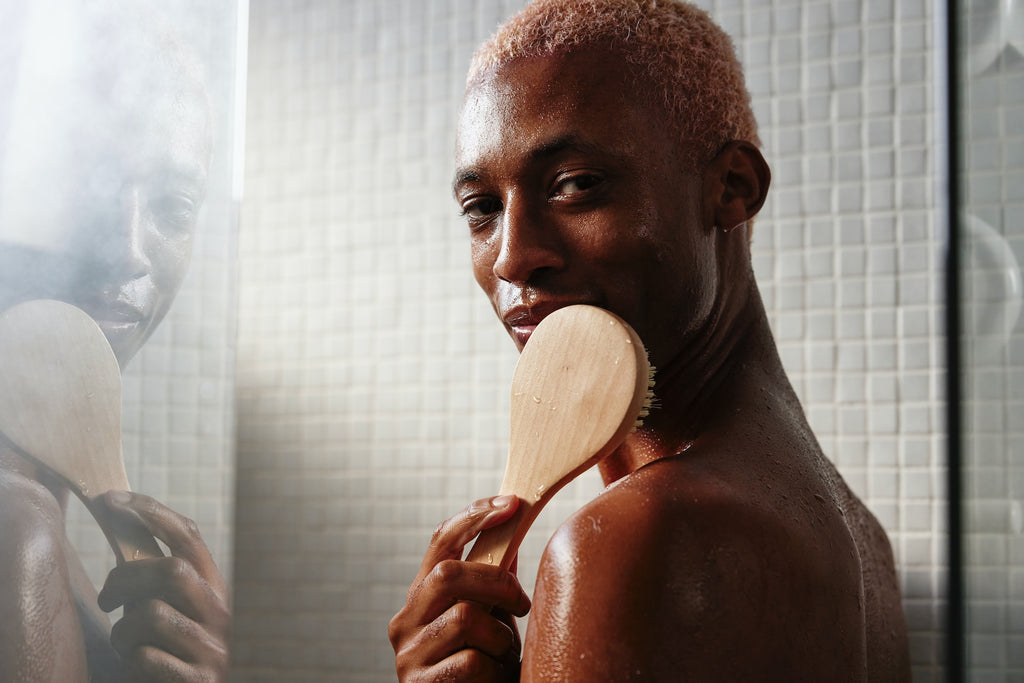
3 Reasons Minoxidil Foam Is Better than the Liquid Variant
Minoxidil is a popular hair loss treatment component used for decades. It is available in two forms—liquid and foam. While both variants have been proven effective in treating hair loss, there are certain advantages to using minoxidil foam over the liquid variant. Here are three reasons why minoxidil foam is better than the liquid variant.
Easier Application
Liquid minoxidil is applied using a dropper, which can be messy and time-consuming. Applying the right amount of liquid to the scalp can be difficult and easily drip down the face or neck. This can be particularly frustrating for individuals with long hair, as the liquid can easily get tangled and make it difficult to style.
In contrast, minoxidil foam is applied using a pump dispenser, making it easier to apply directly to the scalp without making a mess. The foam is also easier to spread evenly across the scalp, ensuring the entire area is treated.
Faster Drying
One of the biggest drawbacks of liquid minoxidil is that it could take a long time to dry. This can be inconvenient for individuals in a hurry or needing to style their hair right after applying the treatment. Wet hair can also be more prone to damage, so it's important to wait until the liquid is completely dry before styling.
Minoxidil foam, on the other hand, dries fast and doesn't leave behind any residue or stickiness. This makes it more convenient, especially for individuals who are always on the go.
Less Scalp Irritation
Liquid minoxidil contains alcohol, which can be harsh on the scalp and cause irritation or dryness. This can be particularly problematic for individuals with sensitive skin or allergy-prone.
On the other hand, Minoxidil foam is alcohol-free and contains a moisturizing agent that helps soothe and hydrate the scalp. This makes it a better choice for individuals who have experienced scalp irritation or dryness when using the liquid variant.
Bonus Reason
In addition to these three key advantages, minoxidil foam has other benefits over the liquid variant. For one, it is more discreet to use. Liquid minoxidil can be noticeable on the scalp, especially if the individual has thinning hair or a bald spot.
Conversely, minoxidil foam is invisible once it dries, making it a better choice for individuals who want to maintain their privacy. Minoxidil foam is also less likely to cause unwanted hair growth on the face or neck, a common side effect of the liquid variant.
Gain a Fuller, Healthier Head and Beard Hair with Tugain
There are many reasons why minoxidil foam is a better choice than the liquid variant. It's easier to apply, dries faster, and is less likely to cause scalp irritation. It is also more discreet and less likely to cause unwanted hair growth. With these benefits, it's easy to see why minoxidil foam has become the preferred choice for many individuals seeking an effective hair loss treatment. Whether you're managing male pattern baldness, female hair loss, or another form of hair loss, minoxidil foam may be just what you need to restore your confidence and achieve a fuller, healthier head of hair.
Tugain's products contain 10 percent minoxidil foam that guarantees hair regrowth on your head, chin, cheeks, and even eyebrows after consistent use! Experience these amazing results by ordering from our online shop now!

